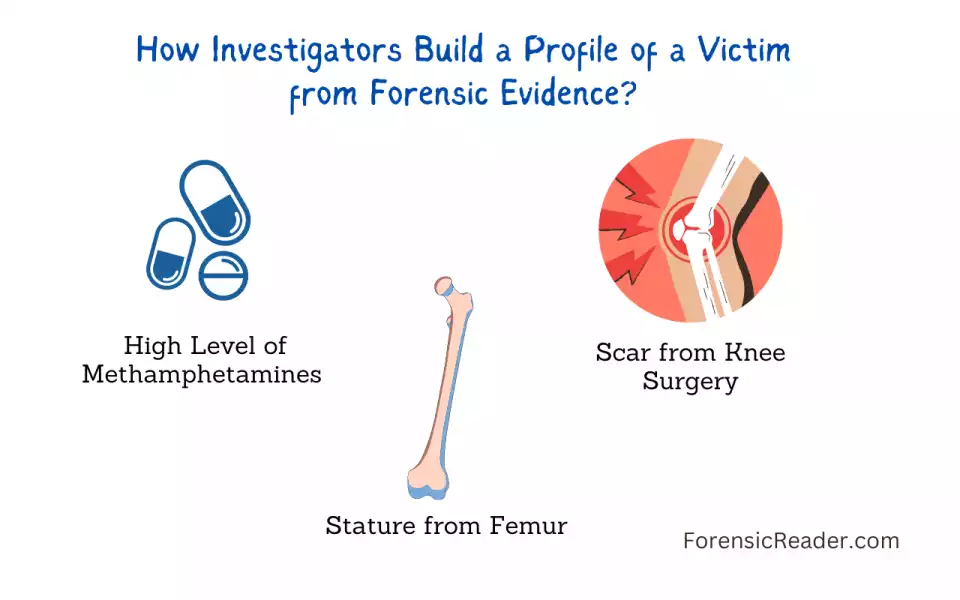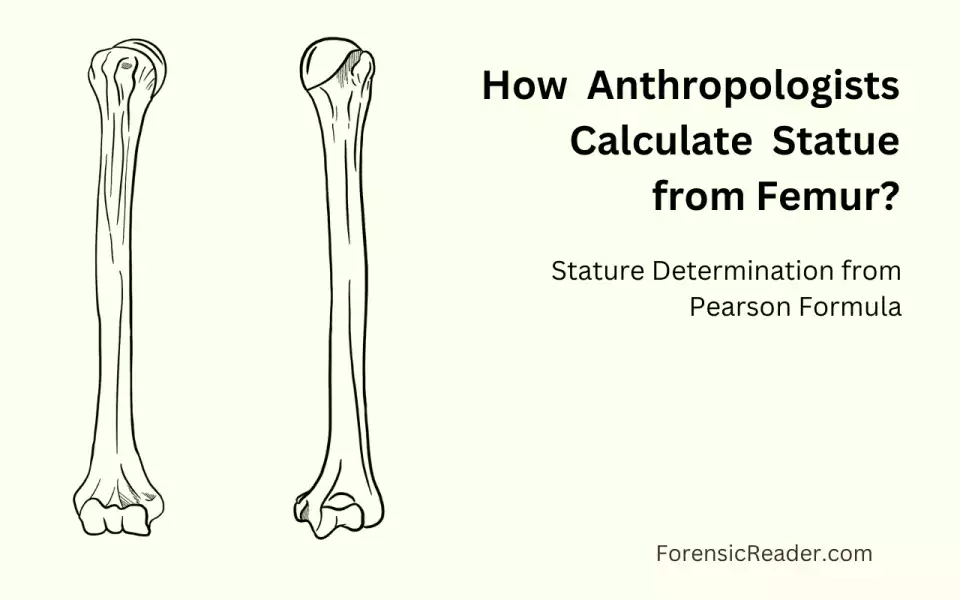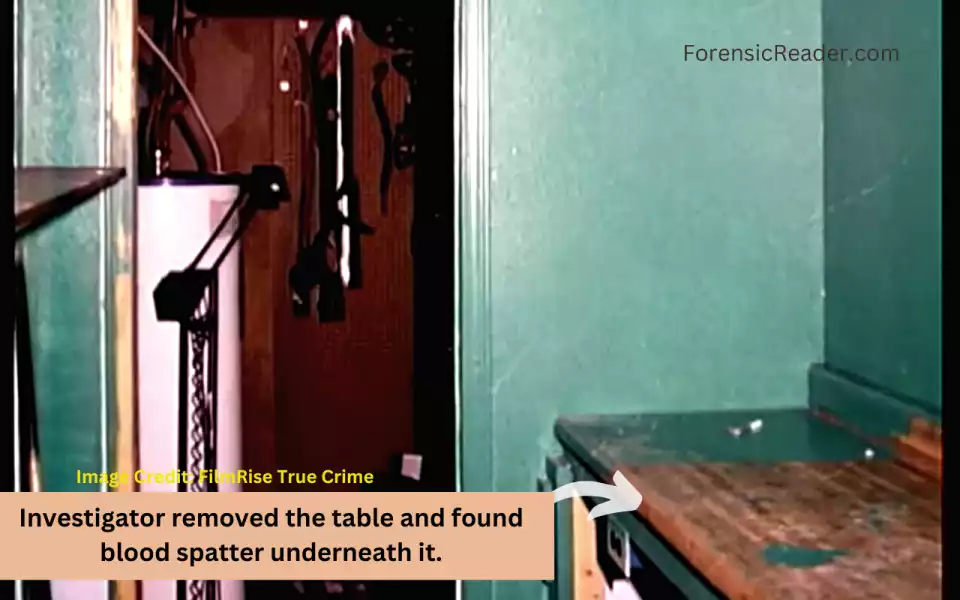Summary of A Leg to Stand on Forensic Files Case

On June 8, 1992, an amputated leg along with a saw was found in a dumpster in Phoenix, Arizona. On investigation, it was found that the garbage bin was cleaned 1 hour ago which means someone dumped the served leg in the one-hour timeframe.
Investigators sent the sample for an autopsy that reveals that the person had knee surgery and toxicological analysis reveals that he was a methamphetamine abuser. From anthropological analysis, the profile was brought to be 6ft tall from the femur bone and Caucasian.
Soon a lady named Patricia called the cops and stated that her boyfriend “Norman Klas (Klos/Kloss)” was missing for a couple of days. She also stated to the investigators that Klos had knee surgery and was involved in the drug business.
The profile matched with the investigator’s victim profile. After an investigation, police came to know that Norman Klos had an enemy Graham King who was also in the same drug business.
Investigators soon got a search warrant for Graham’s house. They invade the house and in the laundry room, they find that it was recently painted and no blood evidence seems visible.
However, after removing the table of the laundry room, investigators found blood, and DNA testing confirmed that it was Norman Klos’s blood. Investigators got an ear-witness who saw Kloss entering Graham King’s house but he never returned back. He also heard a gunshot.
Graham G King was arrested for first-degree murder. However, because Ear-witness refused to testify, prosecutors asked Graham to plead guilty in exchange for 2nd-degree murder and 20 years of jail time. Finally, he plead guilty
Who was Norman Klos? His Girlfriend?
Norman Klos (Klas) was a 32-year man who was living in Phoenix, Arizona with his girlfriend Patricia. He was in the drug business, mainly methamphetamine. He was murdered by his former friend who later became his rival in the drug business.
He was loving and caring and also donated his one kidney to his sister which later helped police to confirm that blood from Graham King’s house was of Norman.
Why did Graham G King Murder Norman Kloss?

There are two theories about why Klos was murdered by Graham G King (culprit).
1. Rivals in Business: Formerly Klos and King were friends but with time they established their own network and stood in the methamphetamine business. Kloss became one of the main rivals and to eliminate competition, Graham might have killed him.
2. Something with Klos’s Girlfriend: Ear-Witness, Troy Killip, reported that he saw Klos entering the G King’s house from the backyard. Soon they started shouting and screaming.
“I heard a bunch of screaming, scuffling. I heard somebody Yell well Kill, Kill Me…. F**king Kill Me. I heard the gunshot. I heard him cutting a man up with an axe. I don’t know for a Fact cause I can’t visualize it.”
Killip’s wording
Killip says they were in an argument because of a woman. Investigators thought it was because of Klos’s Girlfriend Patricia.
Main Evidence in the Case of A Leg to Stand On
| Evidence | Feature | Forensic Significance |
|---|---|---|
| Severed Leg | Recovered from a dumpster in Phoenix, Arizona | Evidence of homicide, height estimation, caucasian race, Knee surgery |
| Drug Test | High level of methamphetamine | Could be a drug abuser, distributor, or dealer |
| Blood spatter | In the laundry room of Graham King’s house | Blood of Norman Klas |
| Recently Painted | Laundry room | Seems painted in a hurry and left blood spots |
| Ear Witness | Repairing car in the backyard of Graham King’s house | Hear fight and gunshot |
How Investigators Build a Profile of a Victim from Forensic Evidence?

1. Methamphetamines in Served Leg
Investigators get to know that the case is drug-related because they found high levels of methamphetamine in an amputated leg that was recovered from the dumpster. This adds the leg’s owner to the drug business.
2. Knee Surgery
Chief Medical Examiner, Philipe E. Keen examined the leg and found surgical scars on the knee. He concluded that the person had knee surgery in the past.
3. Stature Estimation From Long Bone
An anthropologist examines the femur (the largest bone in the human body). He estimates the height of the person would be 6 ft.
4. Caucasian Male
With the skin complexity and bone density of the served leg, the medical examiner concluded that the victim was a caucasian male.
Read More: Gary M. Heidnik Case Study: #Victim, Pattern, Motive, Signature
How do Anthropologists Calculate the Statue of Victim to be 6ft from Femur?

The most common way to calculate the stature of a femur (or any long bone) is through Pearson’s equation.
- Measuring Points for Pearson Formula: Top head to apex of the inner condyle of the femur.
- Pearson’s Formula of Dried Femur bone (F):
- Male Height (in cm): 81.306 + 1.880F
- Female Height (in cm): 72.884 + 1.945F
- Pearson’s Formula of Humid Femur bone:
- Male Height (in cm): 81.231 + 1.880F
- Female Height (in cm): 73.163 + 1.945F
For “A Leg to Stand on” case of Forensic Files, the leg in the dumpster was fresh so, I’m using Pearson’s formula of the humid femur bone to calculate the length of the femur.
As per conversion, 6.0ft = 182.88 cm and the equation will be:
=> 182.88 = 81.231 + 1.880F
Simplifying the terms;
=> 182.88 – 81.231 = 1.880F
=> 101.649 = 1.880F
To solve for F, divide 1.880 on both sides;
=> 101.649 ÷ 1.880 = F
=> F = 54.068
This means the size of the femur from the dumpster leg would be around 54.06 cm. You can use the same equation to come up with the height of the person using the femur bone.
Read More: A Bitter Pill to Swallow Forensic Files Case Study: Maynard Muntzing & Michelle Story
How did the Medical Examiner Know that Leg was Served after Death?
Forensic medical experts told investigators that the leg was amputated after Klas’s death. Following are the signs that are seen in the case of amputation:
- If a person is alive before being served: There should be a sign of healing around the amputation site.
- If a person is dead before being served:
- The amputation site would be pale with no sign of healing.
- Clean cut without inflammation or hemorrhage.
How did a Donate Kidney help in the Identification of a Victim?

When the severed leg was discovered, the investigator’s very first aim is to identify the owner of the leg. For this, generally, forensic DNA fingerprint matching is conducted.
To find whether the leg belonged to the missing person Norman Kloss, DNA analysts need DNA to compare. Later, parental DNA matching couldn’t be possible because Norman was adopted.
However, major breakthrough in the case was when police discovered that Norman donated one of his kidneys to his younger sister. Cops contacted the hospital in Houston, Texas. They found out that the hospital had preserved the tissue sample.
David A. Duplissa, the DNA analyst, compared the DNA autoradiographs from the cell sample with the leg’s cells. They matched perfectly.
This concluded that served leg discovered in the dumpster belonged to Norman Klas.
Read More: Purr-Fect Match [Forensic Files] Case: How Cat’s Hair Solve the Case?
Is the Laundry Room the Crime Scene? How Are Traces of Blood Detected?

When investigators entered the Graham Kings, they found the laundry room was recently painted. Initial thoughts were, “This might be the place where Norman was amputated.”
There was a table attached to the wall, the investigator removed the table and found blood spatter underneath it. They used a simple and presumptive test for blood (Kastle Meyer test).
Procedure: Sample in buds + Kastle Meyer Reagent (Phenolphthalin + H2O2) = Pink color as an indication of blood.
To confirm the sample is blood and originated from Norman’s body, blood was examined via DNA testing. The result was conclusive for Norman’s blood.
Note: In general forensics, a confirmatory test for blood is done before a DNA test.
Why Police waited for Graham King to leave the house even having a Search Warrant?
Graham King was a methamphetamine cooker (manufacturer). He made his house a guarded fortress.
There was three-tier security:
- There were two vicious Rottweilers guarding the backyard.
- 360° view with the mounted camera across the house.
- All entry doors were reinforced.
So, if police entered the house, Graham would have had enough time to eliminate crucial evidence.
This is the reason why police waited for him to leave and then entered his house with a search warrant.
Forensic Analysis and Disciplines Used in the Norman Klas Case
| S. No. | Forensic Discipline | Analysis |
|---|---|---|
| 1. | Forensic Anthropology | Finding stature from leg |
| 2. | Forensic Toxicology | Identify high doses of methamphetamine in the blood |
| 3. | Forensic Serology | Identify the spatter on the wall of the laundry as blood |
| 4. | Forensic DNA Testing | Identify and matched Norman’s DNA with samples |
Read More: Joseph Wehmanen & Erik Schrieffer [A Clutch Of Witnesses] Forensic Files Case
Convection and Punishment for Killer Graham King
Prosecutor Noel Levy affirmed that G King was going to have a minimum of life imprisonment because of the severity of the crime and as a methamphetamine manufacturer.
Firstly, Graham King was arrested for the 1st murder which leads to a maximum of life imprisonment. But things go wrong.
The earwitness Troy, refused to testify because he feared for his life.
So, prosecutor Levy came up with a deal of 20 years of jail time for pleading guilty to second-degree murder. He plead guilty and got 20 years of imprisonment and was reported to get released by 2013.
Read More: John Boyer & Scarlett Wood [About Face] Forensic Files Case Study
General FAQ:
What were mistakes made by culprit Graham King?
Some mistakes were:
- Dumped the served leg in an empty garbage bin grab the attention of the garbage truck driver who recently emptied that garbage bin.
- Fail to hide blood spots: Graham paint the laundry room to hide any blood spots but didn’t able to check the blood spots under the table.
- Walls do have ears: Graham King was so angry with Norman that and didn’t realize someone is repairing the car in the backyard even though he has 360-degree camera surveillance.
What were the major problems faced by investigators and forensic experts in the case?
Some common problems faced by Forensic experts and investigators were (1) unable to find other body parts, (2) No DNA to compare as Norman was adopted, (3) As per the medical expert, the victim had knee surgery which was very common, and (4) Ear witness withdraws his testification.
Why only leg body parts were found and what happened to other body parts of Norman?
As per the investigating reports, the body was amputated in parts and dumped in various garbage bins. Most of the garbage bins were full and emptied by garbage trucks. But the leg was dumped in an emptied bin which was later recovered as the only evidence of homicide.
References:
- Arizona Republic from Phoenix, Arizona [Link]
- Atlas of Amputations & Limb Deficiencies, 4th Edition By J. Ivan Krajbich, et.al. [Book]
- Forensic Files – Season 7, Episode 14 – A Leg to Stand On [YouTube]

FR Author Group at ForensicReader is a team of Forensic experts and scholars having B.Sc, M.Sc, or Doctorate( Ph.D.) degrees in Forensic Science. We published on topics on fingerprints, questioned documents, forensic medicine, toxicology, physical evidence, and related case studies. Know More.
